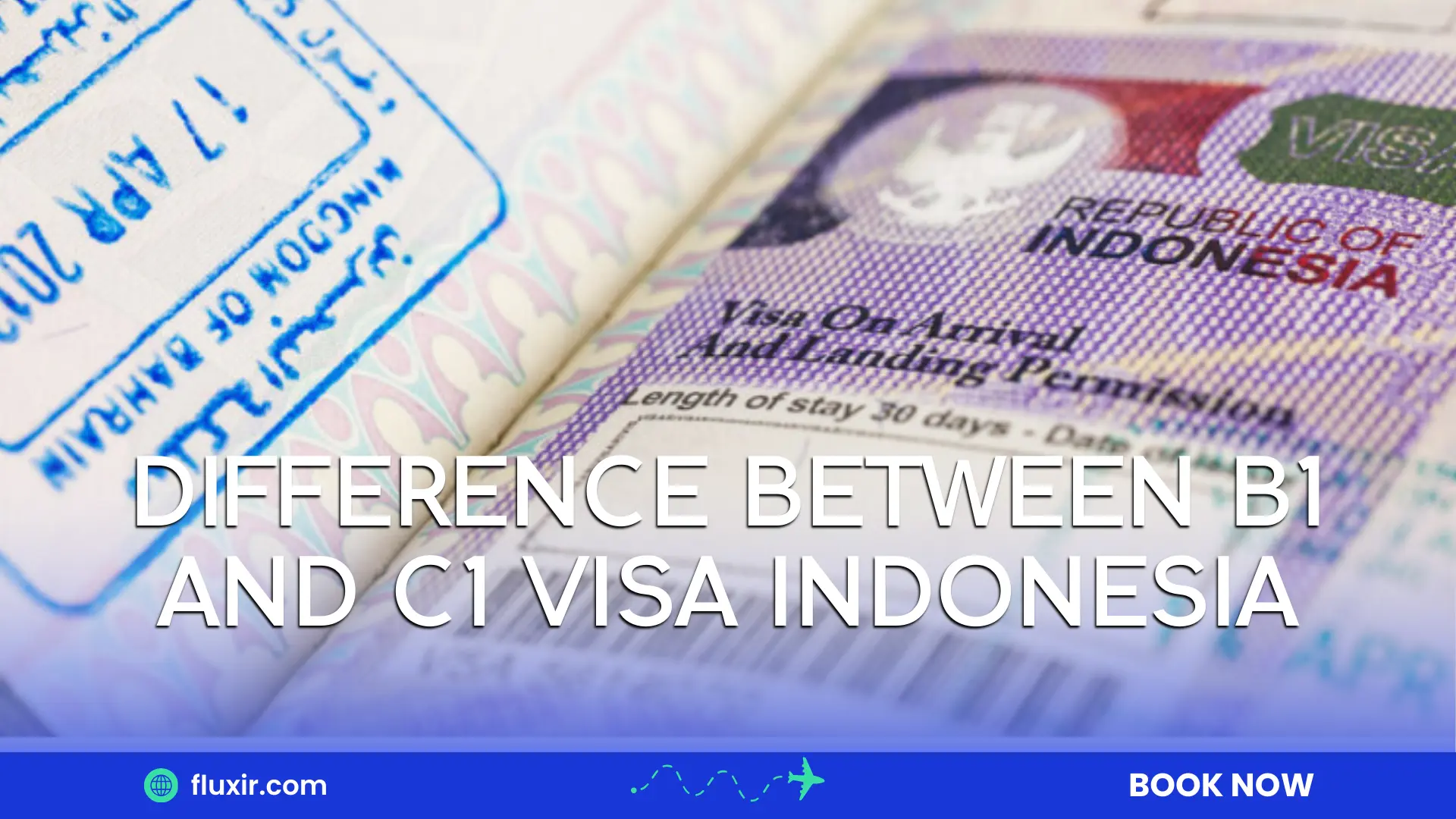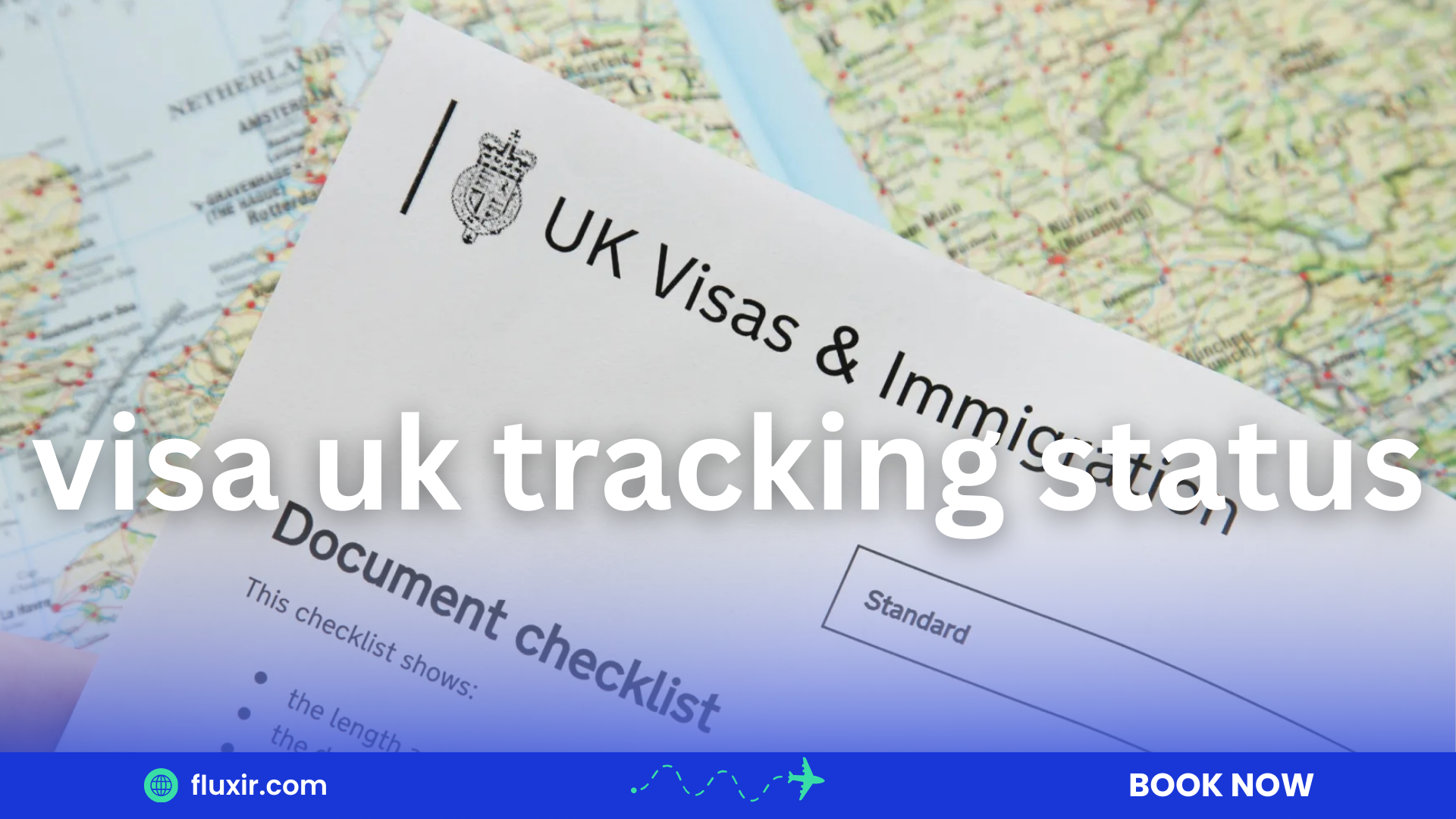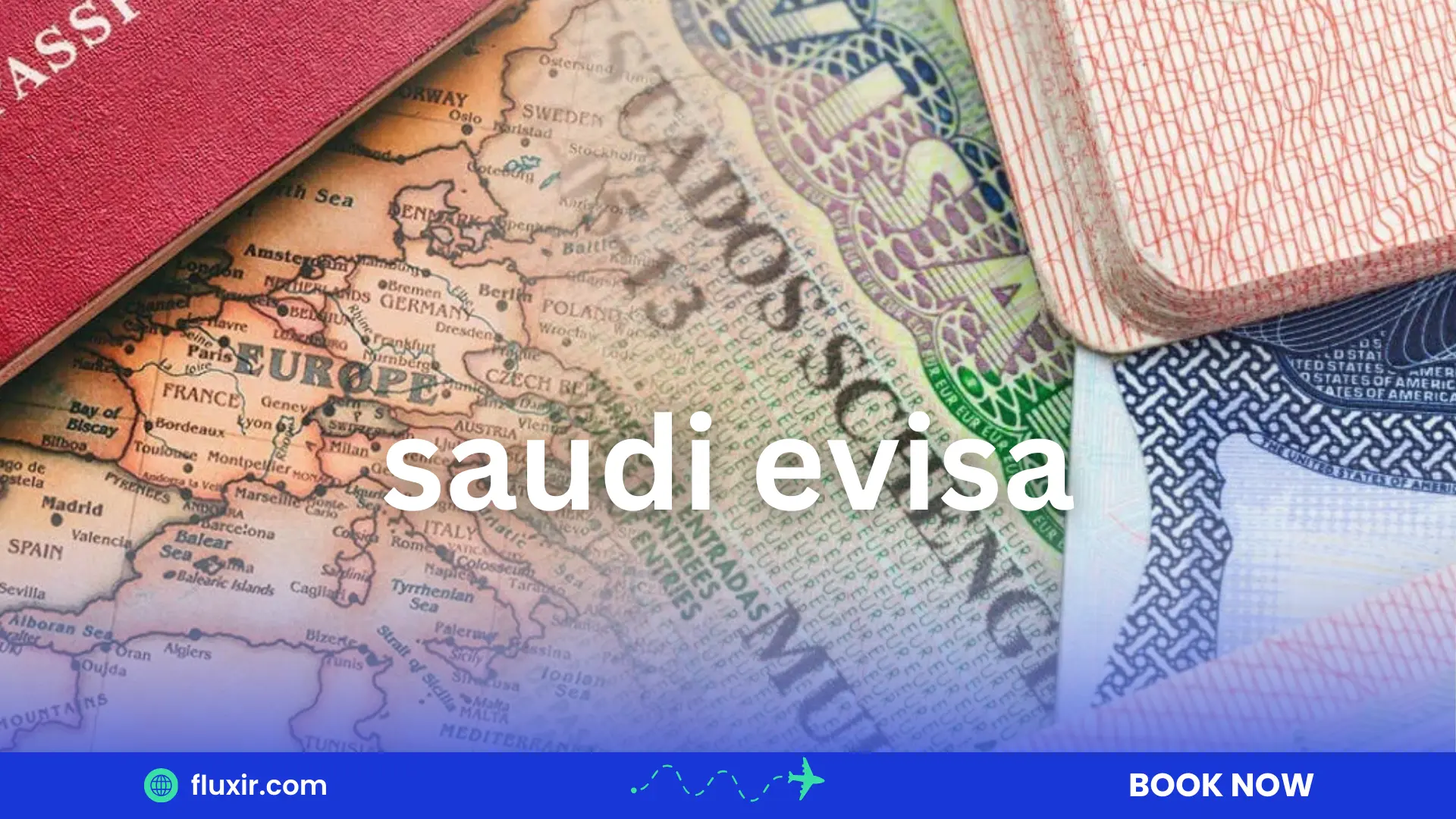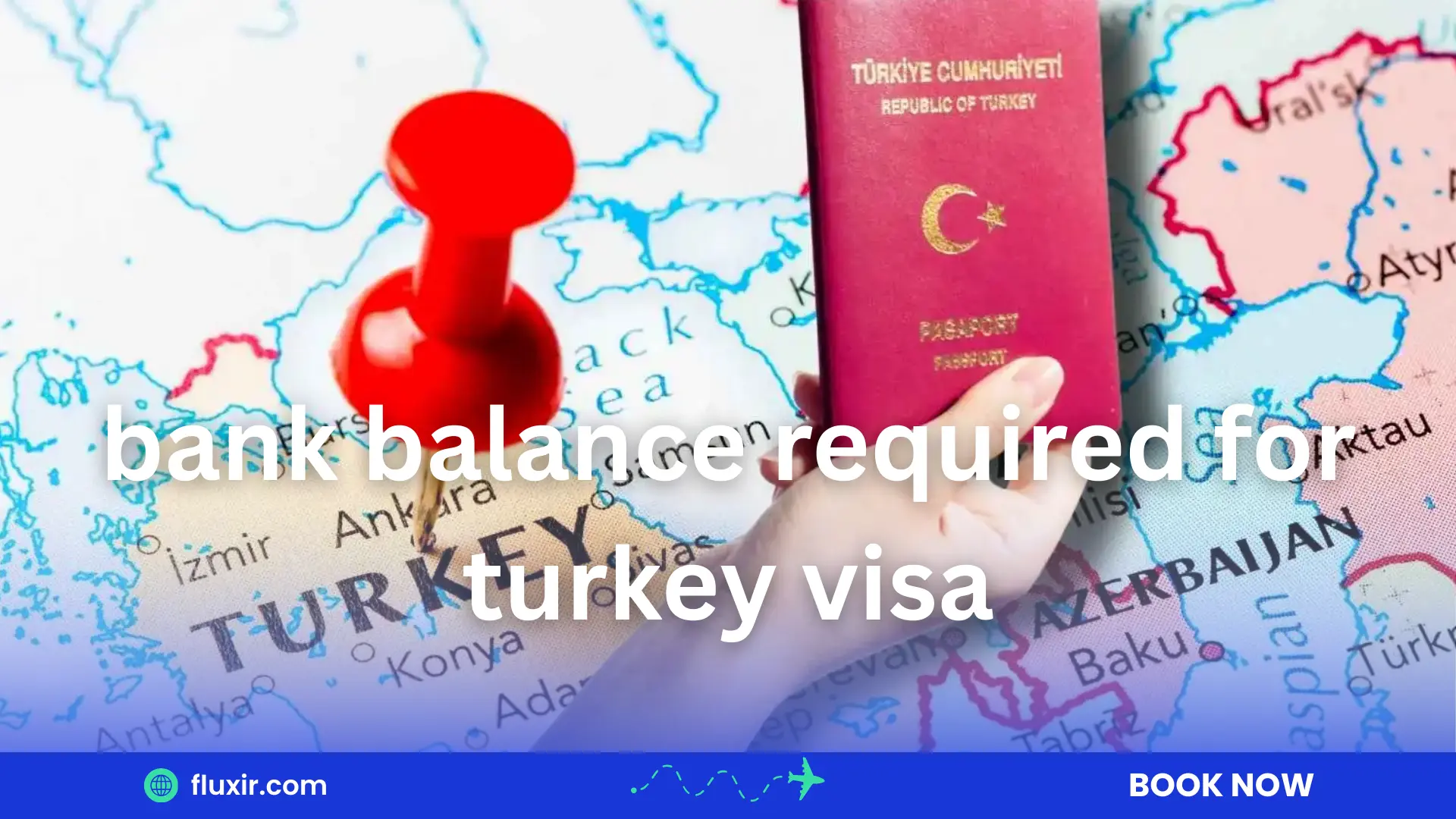If you’re planning a trip to Indonesia, you might have come across different visa types and felt a little confused. One common question travelers ask is: what is the difference between B1 and C1 visa Indonesia? It’s important to understand these differences to make sure you choose the right visa for your trip.
Travelers who can get a B1 Tourist Visa (30 days) (Visa on Arrival) can extend it once for another 30 days (online or with the help of an agent). Travelers can (and sometimes must) apply directly for a C1 (211A) Visit Visa (60 days) before arrival. At Fluxir, we can help you arrange this visa quickly and easily.
In this article, we’ll explain everything you need to know about the difference between B1 and C1 visa Indonesia so you can travel with confidence.
Understanding the B1 Tourist Visa (Visa on Arrival)
The B1 Tourist Visa is the most common choice for short-term visitors who plan to stay in Indonesia for tourism, leisure, or visiting friends and family.
Here’s what you should know about the B1 Visa:
- Visa on Arrival: The B1 visa is typically issued when you land at an Indonesian airport or seaport.
- Validity: It is valid for 30 days starting from your arrival date.
- Extension: You can extend it once for another 30 days, giving you a maximum stay of 60 days without leaving the country.
- Application: No need to apply before you travel. Simply pay the visa fee when you arrive.
- Purpose: Strictly for tourism. It does not allow you to work, study, or conduct any business activities.
The B1 Tourist Visa is perfect if you’re planning a simple holiday or a short visit. However, if you think you might stay longer or have other activities planned, the C1 Visa could be a better choice.
What is the C1 (211A) Visit Visa?
The C1, officially known as the 211A Visit Visa, is designed for travelers who want to stay in Indonesia for a longer period or for purposes beyond just tourism.
Here are the key features of the C1 Visa:
- Pre-Application: You must apply for the C1 Visa before you arrive in Indonesia.
- Validity: It allows you to stay for 60 days initially.
- Extension: You can extend the C1 Visa multiple times, depending on your specific needs and visa type.
- Purpose: While it covers tourism, it also allows for social visits (like visiting family), business meetings, cultural activities, and humanitarian work.
- Application Process: You will need a sponsor letter in Indonesia (for example, from a hotel, a local travel agent like Fluxir, or an individual).
- Approval Time: Processing the C1 Visa typically takes about 7 to 10 working days.
For travelers planning longer stays or different types of visits, the C1 Visa offers greater flexibility compared to the B1 Visa.
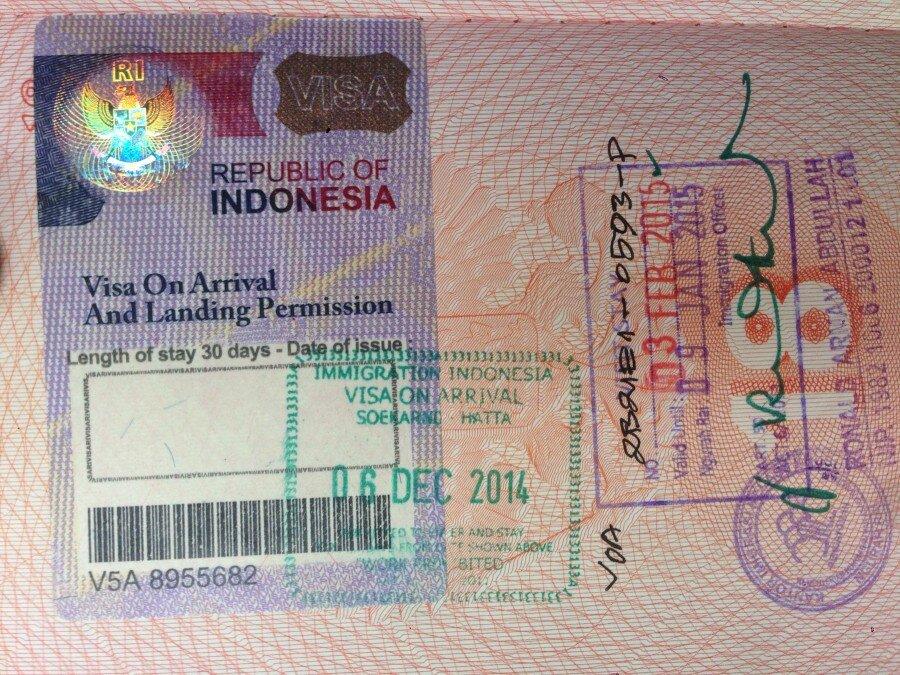
Main Difference Between B1 and C1 Visa Indonesia
Understanding the difference between B1 and C1 visa Indonesia is crucial to planning your travel correctly. Here’s a simple breakdown:
- How to Apply:
- B1 Tourist Visa: You can get it on arrival at the airport or seaport in Indonesia.
- C1 (211A) Visit Visa: You must apply for it before traveling to Indonesia.
- Initial Stay Duration:
- B1 Tourist Visa: Valid for 30 days from your arrival date.
- C1 (211A) Visit Visa: Allows you to stay for 60 days initially.
- Extension Possibility:
- B1 Tourist Visa: Can be extended once for an extra 30 days.
- C1 (211A) Visit Visa: Can be extended multiple times depending on your needs.
- Purpose of Visit:
- B1 Tourist Visa: Only for tourism and leisure.
- C1 (211A) Visit Visa: Suitable for tourism, visiting family, attending business meetings, humanitarian work, and cultural activities.
- Sponsor Requirement:
- B1 Tourist Visa: No sponsor is needed.
- C1 (211A) Visit Visa: Requires a sponsor in Indonesia (a hotel, travel agency, or an individual).
- Application Support:
- B1 Tourist Visa: Generally, you don’t need any assistance.
- C1 (211A) Visit Visa: It is recommended to use professional help, and Fluxir can assist you in handling all the paperwork smoothly.
In short, to understand the difference between b1 and c1 visa indonesia, if you’re only staying for a short vacation, the B1 Visa is probably enough. But if you need flexibility, longer stays, or have other activities planned, the C1 Visa is the safer and smarter option.
Which Visa Should You Choose?
After illustrating the difference between b1 and c1 visa indonesia, choosing between the B1 and C1 visa depends on your travel plans and how long you want to stay in Indonesia.
- Choose a B1 Visa if you are visiting for up to 30 days and your plans are straightforward.
- Choose C1 Visa if you plan to stay longer, extend your stay, visit family, attend business meetings, or participate in cultural events.
Remember, applying for the right visa ahead of time will save you from unnecessary stress during your trip. With Fluxir, applying for a C1 Visa is quick, easy, and fully supported every step of the way.
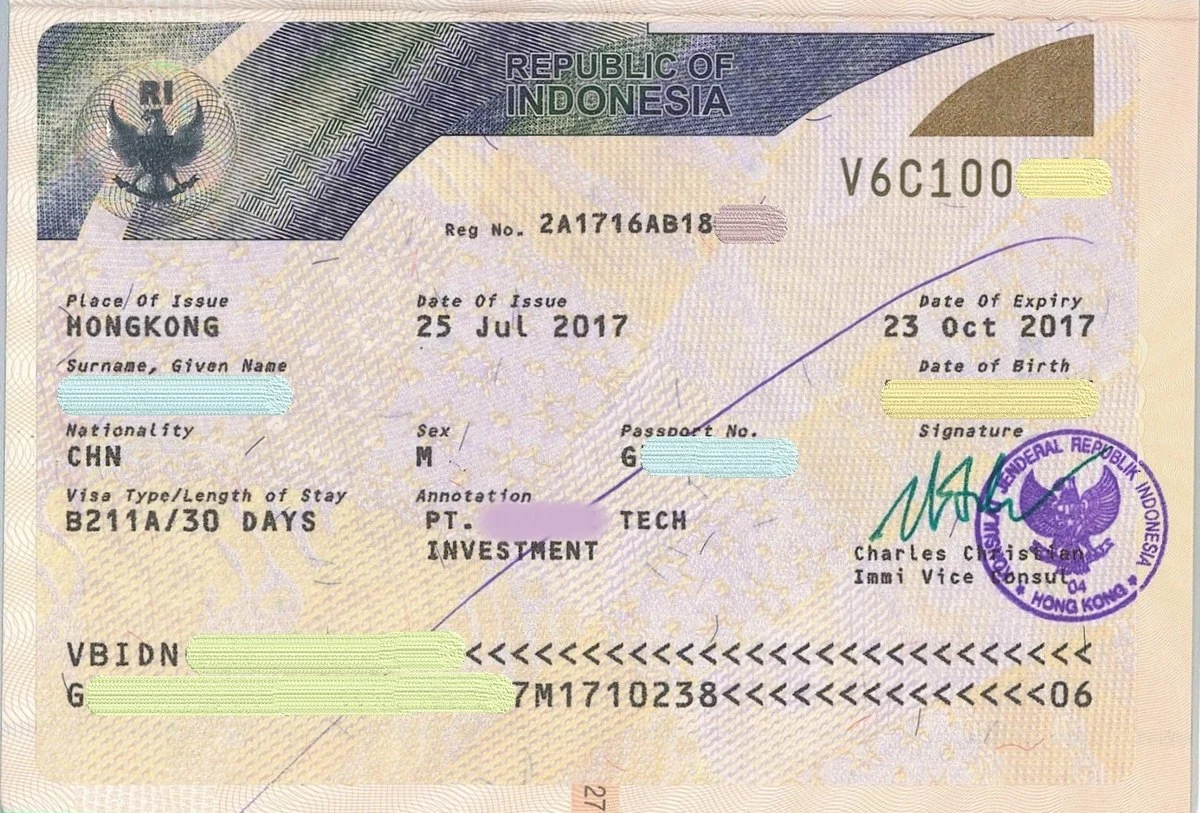
How Fluxir Can Help You with Your Indonesian Visa
Navigating the difference between B1 and C1 visa Indonesia might seem complicated, but with Fluxir, it doesn’t have to be.
Our experienced team can:
- Help you apply for the right visa
- Guide you through the paperwork
- Speed up the approval process
- Assist with visa extensions if needed
We know how important it is to get everything right before you travel. That’s why we are dedicated to making your visa application experience stress-free and efficient.
Ready to Travel? Apply for Your Indonesia Visa with Fluxir Today!
At Fluxir, we make it simple to understand the difference between B1 and C1 visa Indonesia and choose the one that’s right for you. Whether you need a Visa on Arrival or a C1 Visit Visa, we handle all the details so you can focus on enjoying your trip.
Reach out to Fluxir now and let’s start planning your smooth journey to Indonesia today.

